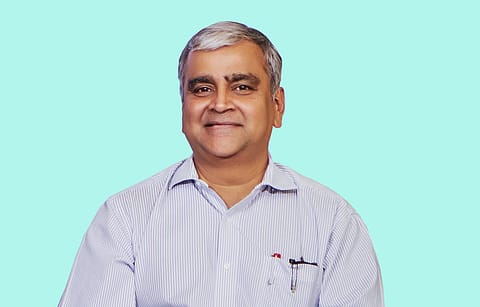STL: 5G is not a distant dream
In an exclusive conversation with Fortune Exchange, Dr. Badri Gomatam, Group Chief Technology Officer, Sterlite Technologies Limited (STL), shares his views on 5G rollouts in India.

In an exclusive conversation with Fortune Exchange, Dr. Badri Gomatam, Group Chief Technology Officer, Sterlite Technologies Limited (STL), shares his views on 5G rollouts in India. Gomatam also details cutting-edge solutions the company offers to drive next decade of digital network creation. Edited excerpts...
What is your assessment of India's preparation for the 5G era? Are we somewhat late vis-a-vis many other countries where it has been launched at least partially?
I believe 5G is not a distant dream anymore. It’s true we are behind the curve a little, but there has been great progress made in the last few months. We see players such as Airtel and Jio making positive announcements about the technology. However, there is work to be done to get 5G ready.
5G adds ubiquitous computing to connectivity. Therefore, the technology needs nimbler network architecture that is open source, virtualised and disaggregated. There need to be concentrated efforts on the part of service providers to create more modern networks.
To support the tremendous amount of data transfer, India needs to make a solid investment in fibre backhaul. The country’s fibre kilometre (fkm) per capita is much less in comparison to several other countries such as China (0.87), Japan (1.3) and the US (1.7). The telcos in India will need to make investments in optical connectivity.
Spectrum allocation is another issue that needs to be sorted very quickly. Already a number of countries have completed the 5G spectrum allocation. India will need to press on the pedal to resolve the 5G spectrum issues.
The availability of spectrum bands needs to be looked in as well. TRAI has so far earmarked the 3.4-3.6 GHz (mid-band spectrum) for 5G services. There is a need to introduce the Millimetre-wave spectrum between 30 GHz and 300 GHz as well.
One aspect of 5G is the readiness and adoption in India. However, we have immense tech talent. How do you see India contributing to the 5G ecosystem globally?
India is the second-largest telecom market in the world and capable of driving the 5G revolution across the globe. Its global talent pool is gigantic and diverse enough to work on different technologies. Apart from the talent pool, the country is also blessed with a solid manufacturing presence and a buoyant start-up ecosystem. The country has more than what it takes to provide 5G for the world.
It is no secret that creating 5G infrastructure would be an extremely capital intensive proposition. Do you think, in the current scenario, the private players in the fray will need more support from the government?
There are no two ways about it. This will require tremendous capital expenditure ranging between $1.3 -2.3 trillion and we know telcos are cash-strapped. The industry, however, has always found its way through challenges with innovation and courage. But it would be great if the government could lend a helping hand. A budgetary outlay for digital infrastructure for the country will be welcome. This will also bolster initiatives such as building broadband highways, connecting rural areas, modernising government networks, etc.
(INR CR)
Please elaborate on technological capabilities and offerings you have developed that can play a critical role in the creation of the larger 5G ecosystem in the country in the coming years?
Open networking is the foundation of future 5G networks and STL is tirelessly investing in it. We are delivering best- in-class 5G ready wireless solutions that are open, programmable and disaggregated. These solutions are developed through combined efforts of the open community, STL and its partners. Backed by its services and system integration capabilities, STL offers a complete stack of end-to-end solutions for a converged network (i.e. both wireless and wire line) for enterprise as well as telco customers.
Optical connectivity will play a crucial role in 5G with backhaul networks required to be significantly augmented to cater to inordinate small cells. The operators need solutions that eliminate signal decay and leakage and are compatible with legacy and future technology. To solve this issue, STL offers Opticonn, an end-to-end optical connectivity solution that allows for faster and more cost-efficient roll out. The solution comprises a number of solutions including Stellar, a bend insensitive, backward compatible fibre, and Celesta, an intelligent bonded ribbon cable with a capacity of 6912 fibre.
What is the timeline you are looking for 5G's eventual rollout and becoming a mass product in India?
We are hearing that the government is planning to auction the spectrum in the first half of 2022. Post that, network rollouts will take a few months as well. I would say 5G is not too far.